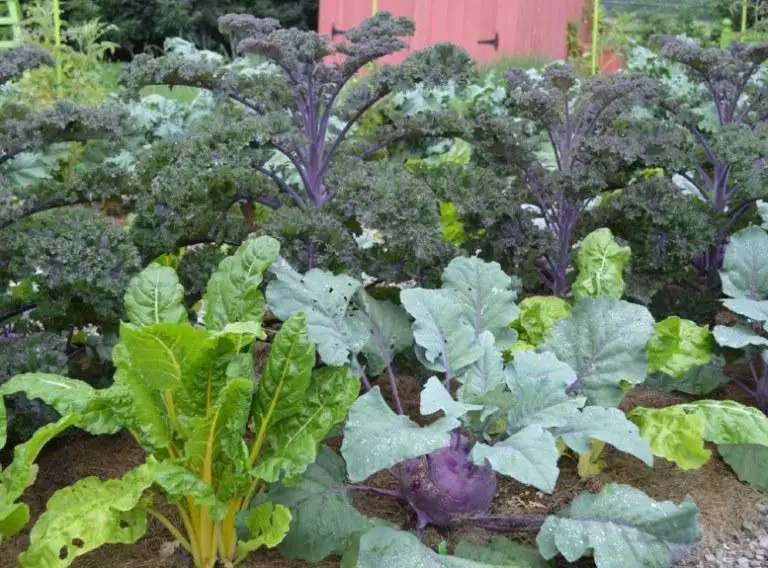No products in the cart.
Plant
List of Winter Vegetables To Grow at Home, in Pots or on Farm
No matter where you live, there are crops that withstand cold temperatures. So to have a thrilling winter harvest, the key is knowing the right winter vegetables to grow. With proper planning and preparation, you can still cultivate a garden or farm with a range of productive crops in cold weather.
Let’s look at the list of best crops to grow during winter and tips on growing them.
*This post may have affiliate links, which means I may receive commissions if you choose to purchase through links I provide (at no extra cost to you). As an Amazon Associate I earn from qualifying purchases. Please read my disclaimer for additional details.
What are winter vegetables to grow?
Home-grown veggies are nutritious and inexpensive, but you’ll need to figure out which winter vegetables to grow at home. Here are some of them.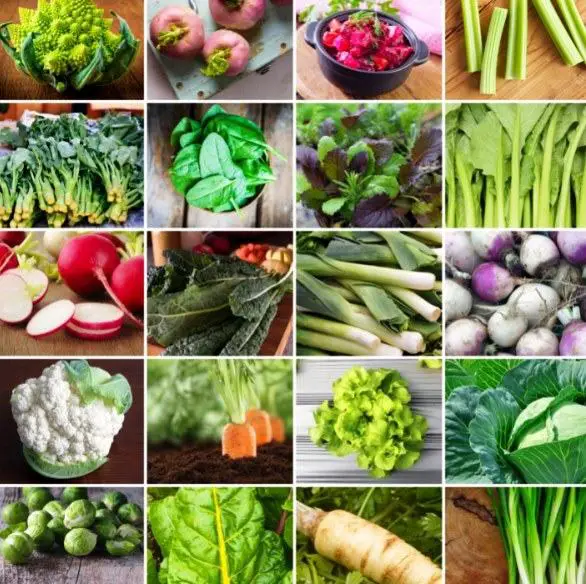
1. Carrots
Carrots are easy to grow as long as the soil temperature is not lower than 45°F. Light frost shouldn’t be a problem for these root vegetables, but make sure to harvest them before the ground turns into freeze.
If the weather is too cold, you can keep these plants warmer by layering mulch at their base.
2. Kale
Kale is cold-tolerant and one of the best winter vegetables grow in shade. It thrives in the soil of 45°F, and some varieties can produce sweet leaves during the first frosty months of the year.
It’s best to harvest these green and leafy veggies before the temperature goes down to 20°F.
3. Broccoli
Broccoli is frost-tolerant, so it’s another winter plant for your garden. Young broccoli plants can withstand the temperature of 40°F while well-established plants can tolerate lower temperatures of 25°F.
Still, broccoli requires full sun and moist soil to grow.
4. Cabbage
This cool-weather crop needs 70 to 120 days to grow, and its best growing season is when the temperature is between the range of 25ºF to 80ºF.
5. Fava Beans
Fava beans are also a cool-season and frost-tolerant crop that you can easily grow in cold temperatures of 40ºF.
6. Mache
Mache is a cold-hardy green that can tolerate temperatures of 5°F without row protection. Even though it grows slowly, they’re one of the easiest greens to grow in winter.
7. Arugula
Arugula is another fall/winter crop that can survive temperatures of 45°to 65°F. In fact, arugula produces the sweetest taste in this temperature range.
It can also put up with light frosts or moderate freezes. If it’s extremely cold, you’d better layer mulch (of bark chips, evergreen boughs, or other organic materials) to protect arugula plants from the chill.
8. Lettuce
Lettuce does well in temperatures of 45°F, but it needs protection from hard freezes. Romaine and butterhead are the two strongest varieties to grow in cold weather, but they still need some protection if there is frost.
9. Turnips
Turnips is another cold-weather crop that germinates even when the temperature is at 40°F. These pretty-colored root veggies thrive in light frost but can be damaged in freezes.
10. Mustard Greens
Mustard is another tasty green that grows well in light frost but will be damaged in freezes. It can germinate in low temperatures of 40°F, but juvenile plants need to be protected with row covers or cloches until their strong roots develop.
11. Radishes
This red and crunchy veggie craves the cold, so it grows well in soil temperatures of 50 to 70°F. Young developing radish plants need several hours of direct sunlight every day to grow strongly.
12. Onions
Onions are super-hardy plants that tolerate cold and frost and can perform well in the soil of 50°F. They require little protection and still provide high-quality bulbs even left under the ground over the winter.
In South Africa, onions are a popular winter veggie, and scallions are the best ones to grow there.
13. Garlic
Garlic provides the best yields if you plant them in fall, and they can withstand cold winter weather of -30°F if planned properly. This herb is one of the easiest-growing winter vegetables to grow in pots.
The key tip is to use pots of 6’’ depth to give adequate room for the roots to grow and keep them watered.
14. Spinach
Spinach doesn’t look like a cold-weather green, but these plants can grow at a temperature of 40°F. It survives harsh weather conditions, especially dry inland like Australia. This nutrient-rich veggie can withstand the cold winter months of Canberra and Melbourne.
Though these little plants can be frosted overnight, they will thaw out the next day and keep growing.
When should winter vegetables be planted?
So you’ve known which type of crops are grown in the winter season, now we need to know when we should plant them.
Deciding on the right timing to plant your winter vegetables can be tricky, as it depends a lot on where you live. In the colder area, seasoned farmers usually start sowing their seeds indoors and wait until the weather warms up to transplant them to the outside gardens.
The rule of thumb is to look for information on how long it takes a crop to harvest. You can look at the packaging of your seeds for these details and then plan out your winter crops.
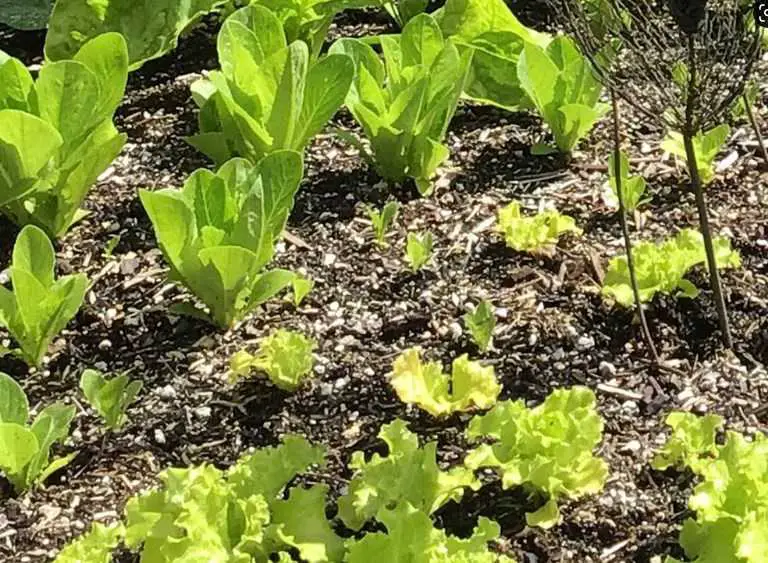
Also, since most winter veggies are not frost-resistant, you might want to check for local weather or consult more experienced farmers for the annual frost dates of your area.
If you live in California and plan to transplant vegetables like lettuce, spinach, mustard, turnips, kale, carrots, then sow your seeds in August. This is when the temperature in soil and air are both conducive to strong crop growth.
However, if you prefer to direct-seed, then start earlier. Late summer would probably be good timing to start seeding onions, cabbages, cauliflowers, and other cole crops as their roots take a while to develop.
Even though most winter vegetables will grow well in cold weather, most of them need warm soil to germinate and become established before the winter months set in. That said, careful planning is the key to successful harvests.
How to start a winter garden?
If you’ve already got established raised beds, just keep planting your winter veggies there. After your summer harvests, simply add compost to provide more nutrients to your new crops.
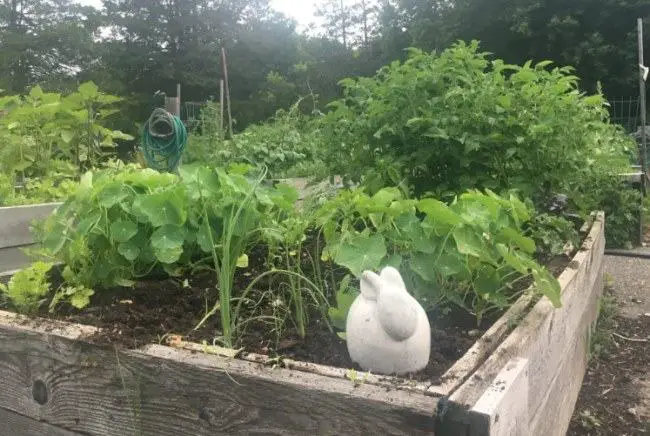
However, if you haven’t got raised beds, then proper soil preparation is important. First, pull any weeds out, then add a layer of compost and mulch on. Old much is efficient in suppressing weeds and protecting your soil.
If time and budget allow, you can also get a soil test to know how much fertilizers to add to soil improvement. Soil test results will also give you some good ideas to adjust the pH levels.
Winter vegetables tend to be more compact than spring and summer crops, so chances are you’ll need less space for the raised beds.
Besides, heavy winter rains can affect soil structure, so planting various winter crops closer together can help prevent erosion. But remember not too close for better soil drainage.
Tips for a successful winter garden
Now you’ve known how to grow winter vegetables, below are a few tips to keep cool-weather crops going:
1. Supply as much sunlight as possible
Most plants will need about 6 to 8 hours of sunlight every day, though some winter vegetables (like lettuce, arugula, or spinach) can still produce crops with just 2 or 4 hours of sun/day.
However, during the winter months, they don’t get much natural sunlight, so before sowing the seeds, it’s important to pick areas of your garden that can catch the most of the sun.
Additionally, you can cut down or trim out tall shrubs and branches to allow more light into your garden.
2. Plant in rows or pots
Planting your winter veggies in rows so you can better protect them with row cover, cloche, or floating row fabric.
Planting them in containers, like clay or plastic pots, is easier during the winter as weeding is much less time-consuming. And, carrying them around to catch sunlight is also much more manageable.
3. Repel pests by herb & companion planting
Instead of using chemicals to get rid of pests, you can choose to grow organic vegetables by picking plant herbs that can repel garden pests naturally. Herbs with strong flavors have long been known to keep pests away. They are rosemary, sage, lavender, basil, mint, just to name a few.
Companion planting is another useful method to repel pests, attract beneficial insects and improve your plants’ overall health. For example, carrots and beets are good companions of cucumber; lettuce is a perfect friend of tomatoes; garlic enjoys being planted with roses.
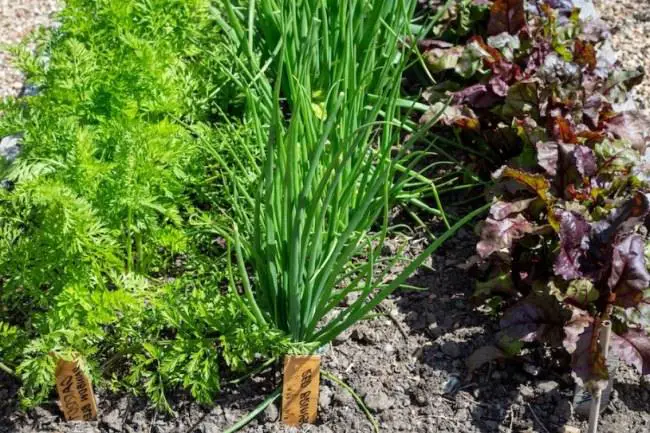
Final words
While many people assume that they can only have a thriving vegetable garden in the summer, there are many tasty veggies to grow when the weather is getting cold.
Most vegetables to grow in winter are hardy, but they still need proper care to protect them from cold soil and frosts. I hope this article has equipped you with useful tips to grow a successful winter garden.
